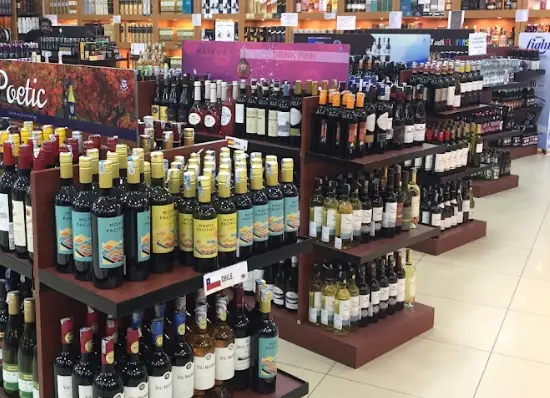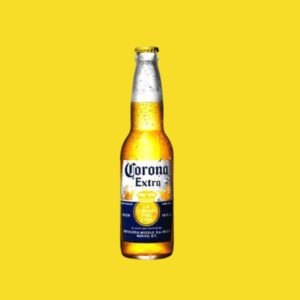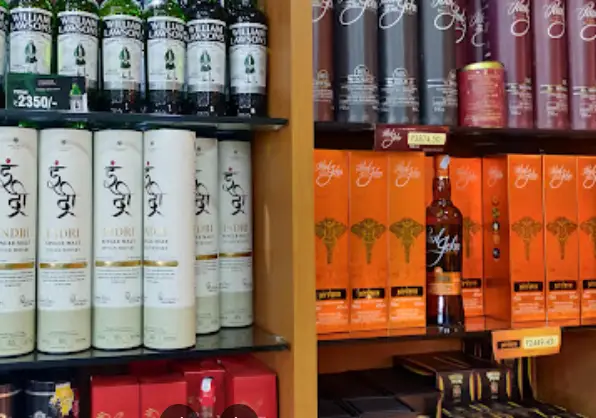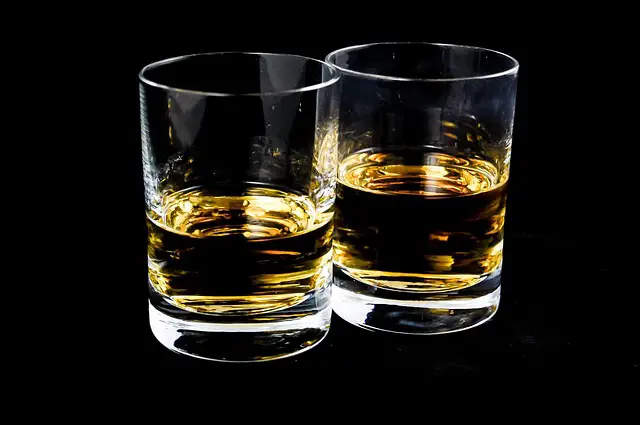Did you know that the average American adult consumes about 8.5 liters of alcohol per year? And about 2.2 billion liters of alcoholic drinks have been consumed by Indians in the last years. That’s why understanding what’s in these drinks is crucial for making informed choices.
In this article, we will let you know the meaning of ABV (Alcohol by Volume), explore its importance, examine its impact, and uncover why it is widely used in the labeling and regulation of alcoholic beverages.
What is ABV?
ABV, or Alcohol by Volume in an alcoholic drink, is a standard measure (volume/volume) used worldwide to quantify the amount of alcohol (pure ethyl alcohol) contained in an alcoholic drink. It represents the percentage of alcohol in the total volume of the alcoholic drink. For example, a beer with an ABV of 5% means that 5% of the total volume of the drink is alcohol.
The Importance of ABV
Consumer Awareness
Knowing the ABV of any alcoholic drink helps consumers make informed decisions about their alcohol consumption. Alcohol tolerance level of each consumer is different that’s why by understanding the alcohol content, consumers can choose drinks that align with their preferences and tolerance levels of all the lovers.
Health and Safety
Alcohol Percentage plays a significant role in determining the the potency of a drink and its potential effects on health. Higher ABV drinks like whiskies can lead to quicker intoxication and greater health risks if consumed in large quantities on permanent basis.
Financial Issues
Usually drinks with high alcohol percentage are considered to be expensive than lower one like whiskies are more expensive than beers.
How Alcoholic Percentage is Measured
Measuring Alcohol percentage in any alcoholic drink like beer or whisky involves scientific methods that determine the alcohol content in them. Here are the primary methods used:
Distillation Method
In this method, alcoholic drink is heated to separate the alcohol from the water and other components. The distilled alcohol collected in separate vessel and then measured to determine its volume, which is used to calculate the ABV.
Hydrometer Method
A hydrometer is a device that measures the density of a liquid. By comparing the density of the beverage before and after fermentation (when alcohol is produced), the ABV can be calculated. This method is commonly used in home brewing.
The Impact of ABV
ABV can significantly affect the flavor and texture of an alcoholic drink. Higher alcoholic content drinks tend to have a stronger, more pronounced taste, which can include a warming sensation. Lower ABV drinks are often lighter and easier to consume. The balance of flavors in a beverage can be influenced by its alcohol content, impacting overall enjoyment. Different countries allow different amount of alcohol volume.
The alcohol content of a drink directly influences the rate and level of intoxication. Higher alcohol strength beverages lead to quicker and more intense intoxication, while lower ABV drinks result in slower, more gradual effects.
Why ABV is Used
Alcohol percentage provides a standardized method for comparing the alcohol content across different alcoholic drinks and let the people know their capacity to drink. By knowing alcohol strength, consumers can easily compare the potency of a beer, wine, or spirit and make informed decisions based on their preferences and tolerance levels.
Alcohol quantity plays a significant role in the marketing and advertising of alcoholic products for different purposes and events on the different times of a year. For instance, light beers with lower Alcohol percentage are marketed as refreshing and suitable for casual or social drinking, while high- Alcohol percentage craft beers and spirits may be promoted for their intensity and complexity. Like Alcohol percentage of Kingfisher Ultra Supreme Lager Beer is 5.0% which make it best choice for hot summer.

Alcohol Percentage in Common Alcoholic Drinks
Beer
- Alcohol Percentage Range: 4-8%
- Kingfisher Beer
- Amstel beer
- Corona Beer
- Budweiser
- Natural Light Beer
- Reed’s Ginger Beer

Wine
- Alcohol Percentage Range: 12-15%
- Sweet Red Blend Barefoot
- red wines
- Fratelli Wine
- Mulled wine
Spirits
- Alcohol Percentage Range: 35-50%
- Black White Blended Scotch Whisky
- Johnnie Walker Red Label (40%)
- James E. Pepper
- Bagpiper Whisky
- Indri Whisky
- 8 PM

Local Indian Alcoholic Beverages
| Beverage Name | Alcohol Content |
|---|---|
| Feni (Goa) Alcohol Content | 43-45% |
| Toddy (Palm Wine) Alcohol Content | 4-6% |
| Mahua (Madhuca Longifolia) Alcohol Content | 20-40% |
| Desi Sharaab (Country Liquor) Alcohol Content | 30-50% |
| Chhaang (Himalayan Regions) Alcohol Content | 5-7% |
| Handia (Jharkhand, Odisha) Alcohol Content | 8-10% |
| Kesar Kasturi (Rajasthan) Alcohol Content | 30-35% |
| Arrack (South India) Alcohol Content | 33-45% |
| Chullu (Himachal Pradesh) Alcohol Content | 25-30% |
| Apo (Arunachal Pradesh) Alcohol Content | 12-15% |
| Apong (Assam) Alcohol Content | 6-8% |
| Sulai (Assam) Alcohol Content | 20-25% |
| Sonti (Karnataka) Alcohol Content | 8-10% |
| Sekmai (Manipur) Alcohol Content | 10-12% |
| Zutho (Nagaland) Alcohol Content | 8-10% |
| Raksi (Nepal, Sikkim, Darjeeling) Alcohol Content | 40-45% |
| Chuwarak (Tripura) Alcohol Content | 40-45% |
| Lugdi (Himachal Pradesh) Alcohol Content | 5-7% |
| Bhaang (Cannabis Beverage) Alcohol Content | 5-8% |
| Taadi (Palm Toddy) Alcohol Content | 4-6% |
| Kallu (Toddy from Kerala) Alcohol Content | 4-6% |
| Rohan Di Madira (Punjab) Alcohol Content | 5-8% |
| Sikkimese Chaang Alcohol Content | 5-7% |
| Zawlaidi (Mizoram) Alcohol Content | 12-14% |
| Nannari Sherbet (Tamil Nadu) Alcohol Content | 0.5-1% |
| Mishti Aam (Bengal) Alcohol Content | 10-12% |
| Po:ro Apong (Assam) Alcohol Content | 6-8% |
| Khajuraho (Madhya Pradesh) Alcohol Content | 30-35% |
| Santra (Nagpur) Alcohol Content | 30-35% |
| Orange Country Liquor (Nagpur) Alcohol Content | 30-35% |
| Green Label (Country Spirit, Bengal) Alcohol Content | 30-35% |
| Jawan No. 1 (Rajasthan) Alcohol Content | 30-35% |
| Jagatjit (Punjab) Alcohol Content | 30-35% |
| Country Liquor (Uttar Pradesh) Alcohol Content | 30-35% |
| Santra Desi Daru (Maharashtra) Alcohol Content | 30-35% |
| Chind (Madhya Pradesh) Alcohol Content | 25-30% |
| Pochai (Meghalaya) Alcohol Content | 10-12% |
| Baiju (Local Chinese Spirit, in some Indian regions) Alcohol Content | 40-60% |
| Xaj Pani (Assam) Alcohol Content | 8-10% |
| Bangla (West Bengal) Alcohol Content | 30-35% |
| Sura (Gujarat, Maharashtra) Alcohol Content | 5-8% |
| Jaggery Wine (Goa) Alcohol Content | 10-12% |
| Tadi (Palm Toddy, Maharashtra) Alcohol Content | 4-6% |
| Salfi (Chhattisgarh) Alcohol Content | 5-8% |
| Kaad (Himachal Pradesh) Alcohol Content | 5-8% |
| Chhang (Leh and Ladakh) Alcohol Content | 5-7% |
| Kesar Kasturi (Rajasthan) Alcohol Content | 30-35% |


